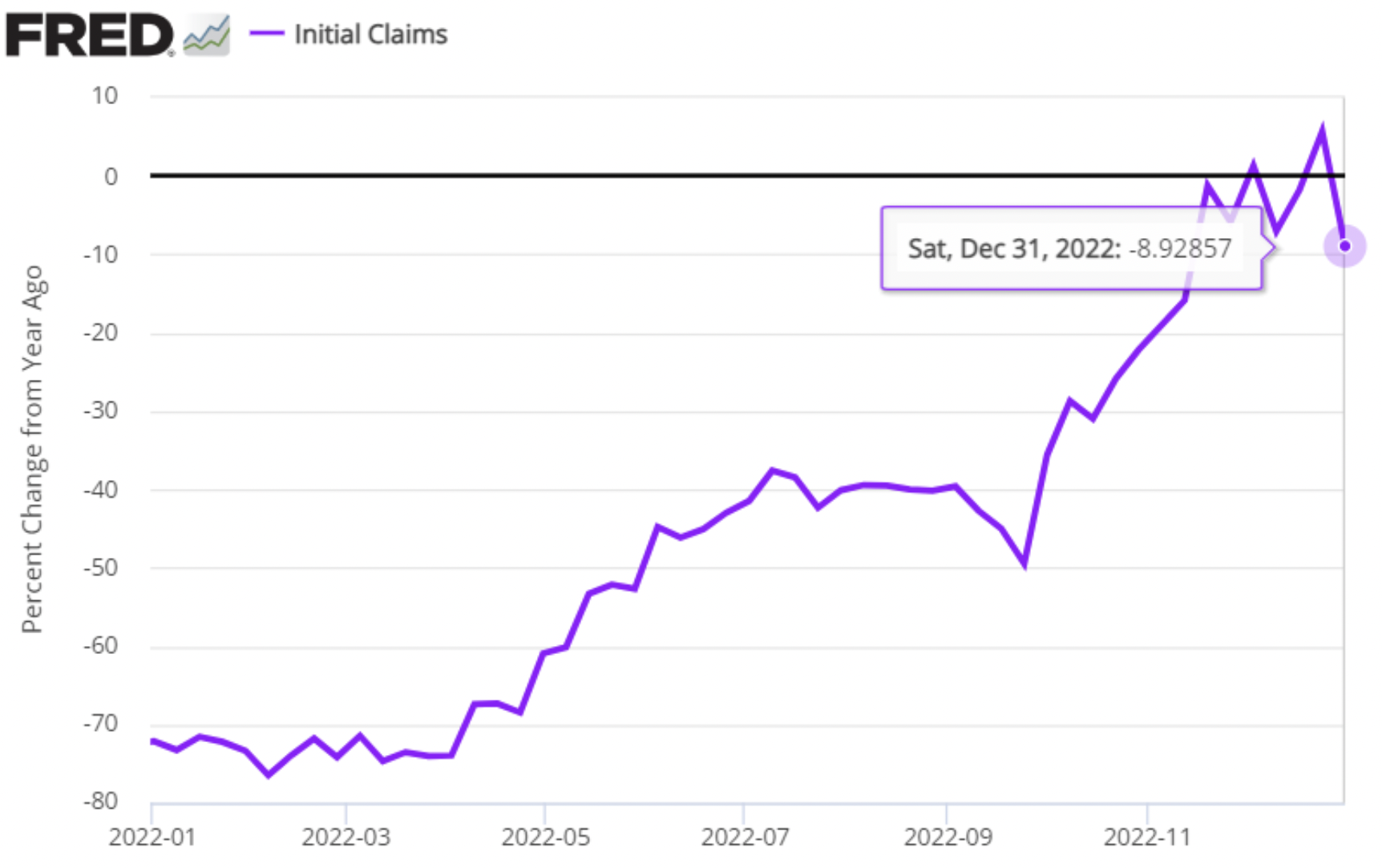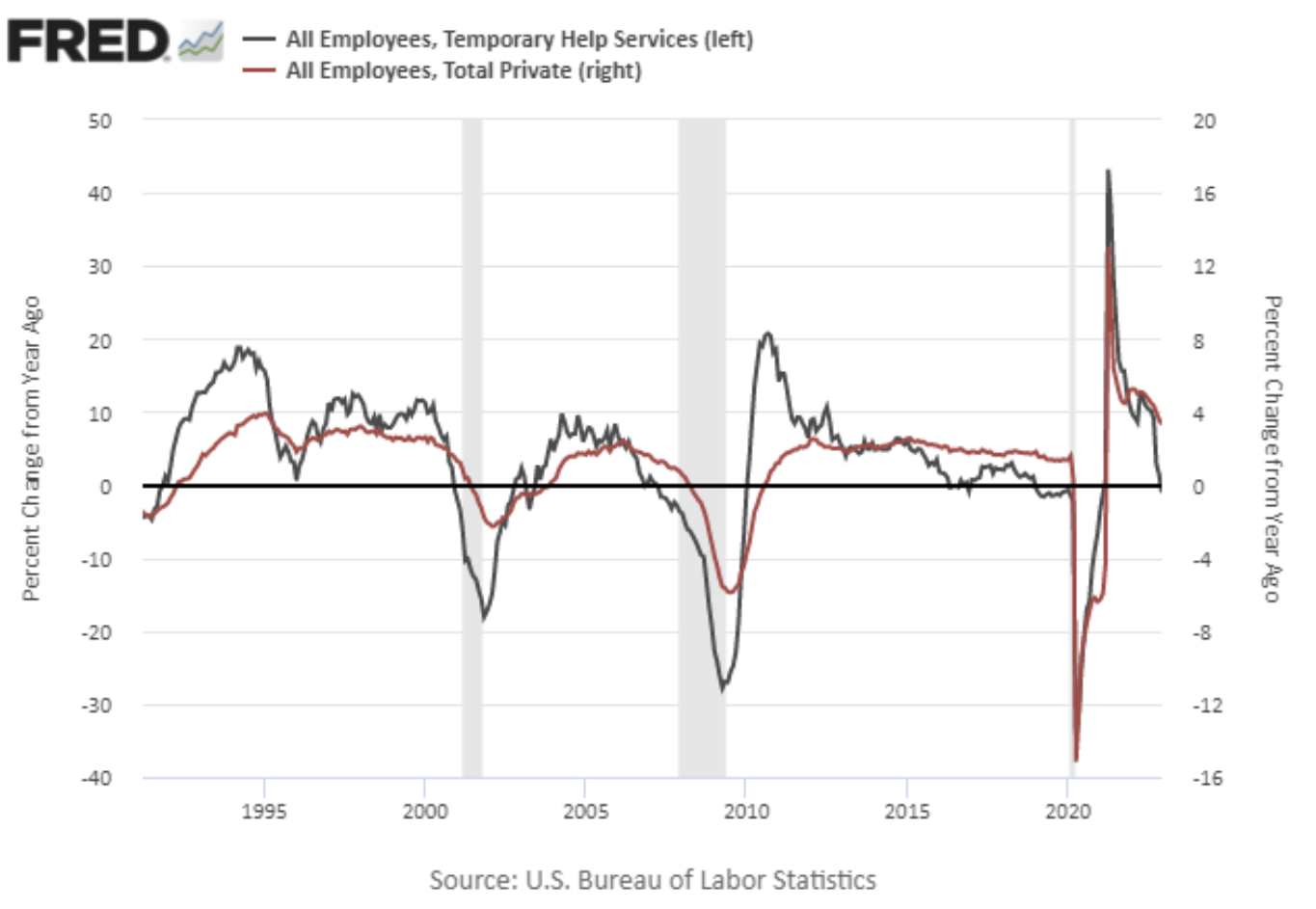
Recession forecasts are flying left and right lately, but the main pushback is the labor market. The growth rate for is slowing, but gradually and the latest numbers for December continue to show a solid gain. Yet recession fears persist, thanks to warnings from other economic and financial indicators.
Will the labor market soon give way and confirm the dark forecasts? Yes, or so it appears via the slide in temporary workers – considered a leading indicator for payrolls generally.
The reasoning for looking at temp workers as an early sign of things to come for the broad hiring trend: companies are inclined to reduce/cut temp workers before chopping full-time employees when business activity slows. “Temp employment turns negative months before total nonfarm employment,” observed a researcher at the Richmond Fed back in 2011.
SGH Macro’s US economist Tim Duy reaffirmed the point in a research note earlier this week:
“This series was a very good leading indicator ahead of the 2001 and 2007-2009 recessions and suggests that tighter [monetary] policy is having an impact underneath the surface of the labor market.”
History tells the story. Notably, in the last three recessions, the year-over-year change in temp workers turned negative well ahead of the broad measure of private payrolls.
It could be different this time, of course, but the 1.1% decline in temp workers in December vs. the year-ago level – the first negative print in nearly two years — looks like a warning flag.
So, too, does the upside bias in the year-over-year change in weekly jobless claims, another leading indicator within the labor market. Although new filings for unemployment benefits retreated in the latest update, the bearish upside trend looks persistent and so this data set deserves close attention in the weeks ahead of the next monthly payrolls release.








